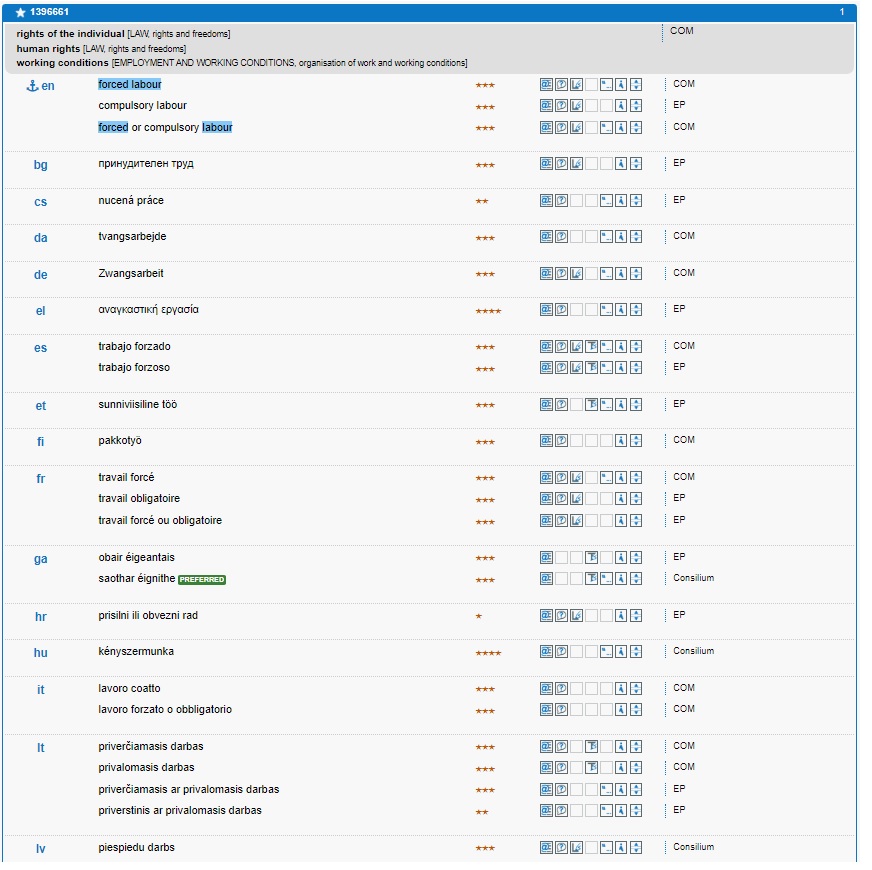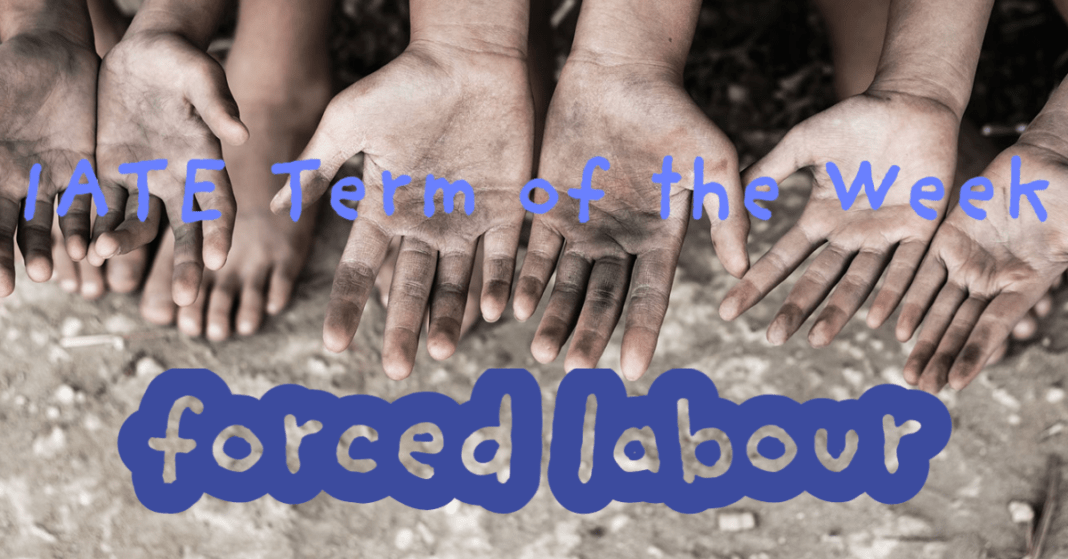“Forced labour” is defined in IATE as “all work or service which is exacted from any person under the menace of any penalty and for which the said person has not offered himself voluntarily”. The definition was set out in the International Labour Organization (ILO) Forced Labour Convention, 1930 (No.29).

Forced labour and forced marriage are the two elements of what the International Labour Organization (ILO) calls “modern slavery” in its Global Estimates.
According to the 2021 Global Estimates, 27.6 million people are in situations of forced labour on any given day; 11.8 million of them are women and girls, and 3.3 million are children.
The numbers have increased in recent years: there was a raise of 2.7 million in the number of people in forced labour between 2016 and 2021, which corresponds to an increase in the prevalence of forced labour from 3.4 to 3.5 per thousand people in the world.
This raise is partially due to the consequences of the COVID-19 pandemic. During the first months of the pandemic, income disruptions led to greater indebtedness among workers, and to a deterioration of working conditions. The crisis resulted, in some cases, in situations of forced labour.
Forced labour is a global concern: it can occur regardless of the country’s wealth and no region of the world is spared from it. More than half of all forced labour occurs in either upper-middle income or high-income countries.
Adult migrant workers are at least three times more likely to be victims of forced labour, compared to an adult non-migrant worker. These findings underline that irregular or poorly governed migration, in which migrant workers are not protected by law or unable to exercise their rights, exposes migrants to a higher risk of forced labour.
Eradication of forced labour by 2030 and child labour by 2025 are specific targets in the UN Sustainable Development Goals. In several resolutions, the European Parliament has called for a ban on products made with forced labour, and it adopted resolutions on specific issues related to forced labour.
On 14 September 2022, the European Commission also presented a proposal for a regulation to ban goods made using forced labour, including child labour, on the internal market of the EU, intended to complete the EU legislative framework on forced labour. The proposal covers products of any type, made in the EU for domestic consumption and export, as well as imported goods. Member States would be responsible for the enforcement of the regulation’s provisions and the national authorities would have the right, after conducting an investigation, to withdraw products made using forced labour. Currently, no EU legislation empowers Member States’ authorities to ban a product made with forced labour from the market.
References
Global Estimates of Modern Slavery: Forced Labour and Forced Marriage International Labour Organization (ILO), Walk Free, and International Organization for Migration (IOM), Geneva, 2022 https://www.ilo.org/wcmsp5/groups/public/—ed_norm/—ipec/documents/publication/wcms_854733.pdf
EPRS | European Parliamentary Research Service, “Proposal for a ban on goods made using forced labour”, February 2023 https://www.europarl.europa.eu/RegData/etudes/BRIE/2023/739356/EPRS_BRI(2023)739356_EN.pdf
International Labour Organisation (ILO), Forced Labour Convention, 1930 https://www.ilo.org/dyn/normlex/en/f?p=NORMLEXPUB:12100:0::NO::P12100_ILO_CODE:C029
Written by Chiara Felicetti

Chiara Felicetti holds a BA in Languages for Interpreting and Translation and a MA in Interpreting and Translation. She studied in Italy, France, and Belgium and is currently a trainee in the Italian Translation Unit of the European Parliament in Luxembourg. Her working languages are Italian, English, and French. She likes the sea, the sun, spending time with her family and friends, and travelling.

